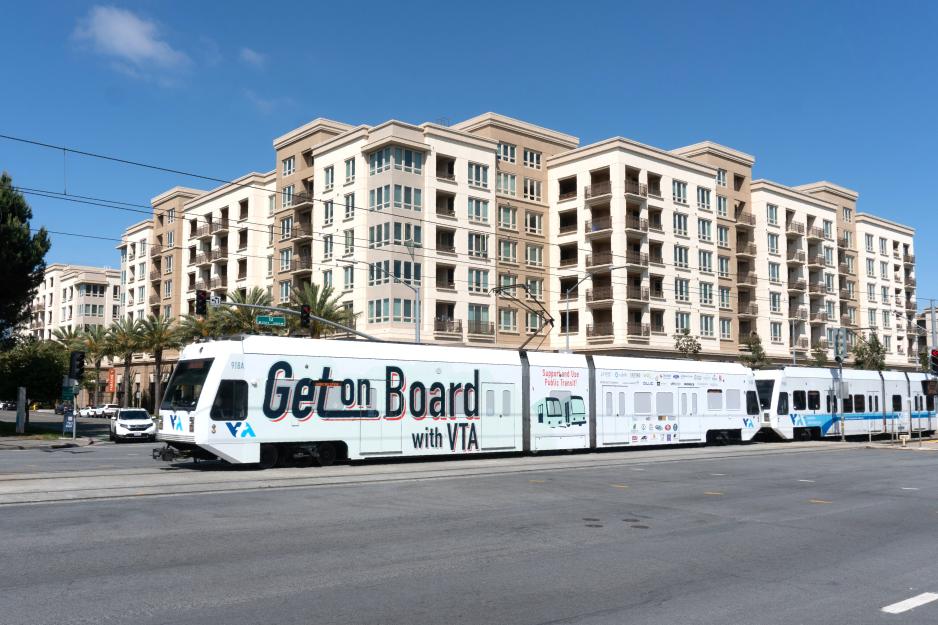Moving people quickly, reliably, and safely are important features for establishing transit ridership. For light rail to be an attractive transportation mode and competitive with the automobile, it must be direct, travel times must be competitive with cars, and stations must be visible, easily accessible, and serve major trip generators.
Big Picture Ideas
- Directness
Alignments should be direct as possible, avoiding sharp or circuitous route deviations unless they are needed to serve a major trip generator or avoiding environmental impacts that are cost prohibitive to mitigate.
- Integration with community
Land uses around station areas should be diverse and mixed at transit-supportive densities. Development that is pedestrian-oriented and transit-friendly allow people to connect easily.
- Connections with major trip generators at multiple locations
Provide many connections to light rail with major trip generators such as civic and employment centers, mixed-use districts and high-density residential areas, colleges and universities, shopping centers, and entertainment and sports complexes.
- Priority operating and safety conditions
Preferred operating conditions could include a dedicated right-of-way or in-street running on exclusive ROW with grade separations at major intersections. Further improvements may include signal priority or full signal preemption (operating conditions where transit has priority over traffic). A semi-exclusive ROW with full signal priority and enhanced safety measures at intersections can also be utilized.
System Design
VTA must balance highly technical aspects of planning, design, construction, operations, and maintenance with community needs and expectations alongside the needs and expectations of local governments. In addition, VTA must also balance the consideration of new services with the ongoing operation and maintenance of its existing services.
Project goals and the potential tradeoffs between goals and operational performance may have impacts to ridership. Trade-offs should be considered in early planning phases.
Operating Configurations
Operating configurations will vary by project and project segment depending on established goals and other considerations. The following examples are offered to illustrate the varied operating conditions that project planning may propose to meet project planning goals:
- Exclusive trackways may be elevated, subway, or operating in a railroad corridor without at-grade crossings at roadway intersections. Rail does not interact with other modes. An example of exclusive trackway is the median of Highway 87 and Highway 85 or BART Silicon Valley.
- Semi-exclusive trackways are essentially “at-grade” operating in street medians or rights-of-way with some type of demarcation between the trackway and sidewalk or roadway. The design of at-grade facilities must be sensitive to city and community needs. Examples include light rail along North First Street in San José, and along Tasman Drive in north county cities.
- Non-exclusive trackways operate in areas with other modes, either within a roadway or in a pedestrian mall configuration. An example of this is the Downtown San José Transit Mall.
- Shared-track trackways are often referred to as “streetcar” lines. Many “historic trolley” lines operate within shared track conditions. These types of operations require rail to operate in a more constrained right-of-way than is typically required for an exclusive trackway. Train speeds are assumed to adhere to posted speed limits and are subject to the limits and constraints of existing traffic conditions.
